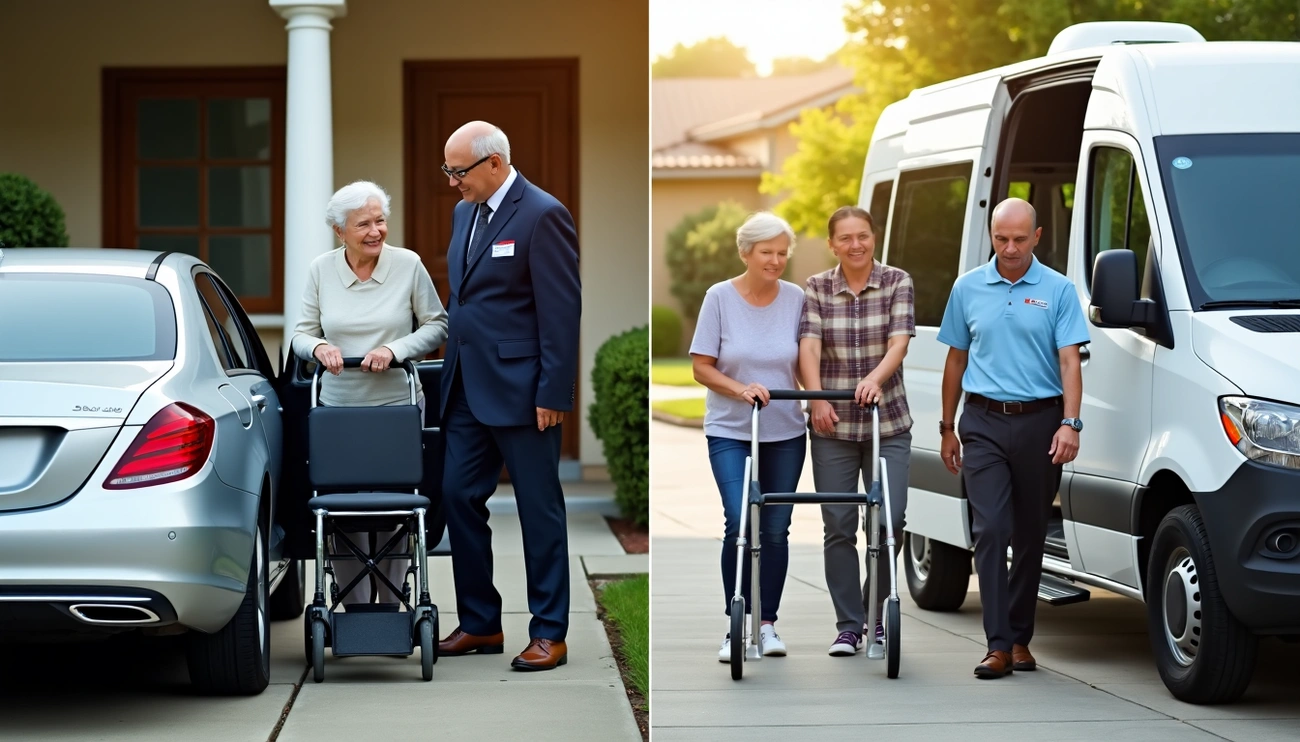In today’s aging society, the challenge of finding compatible senior living options that cater to both the emotional and physical well-being of elders has become paramount. Pet friendly assisted living emerges as a significant solution, blending the nurturing presence of animal companionship with the supportive services of assisted living facilities. This harmonization addresses a crucial aspect of senior health—enhancing quality of life through pets, whilst ensuring safety and care in a structured environment. The inclusion of cats, dogs, and other pets in assisted living not only fosters a sense of belonging and happiness among seniors but also adheres to their need for companionship, thus playing a vital role in their overall well-being.
This article navigates through the various facets of pet friendly assisted living, delving into the benefits pets offer to seniors residing in such facilities, alongside the challenges they may encounter. It offers a comprehensive guide on choosing the right pet friendly assisted living community, emphasizing the importance of pet policies, pet fees, and the provision of pet care services. Furthermore, it explores the support available for pets within assisted living, from daily care routines to ensuring pet safety. Each section is crafted to provide essential information, helping readers understand assisted living that allows pets, and how to ensure their furry companions can seamlessly transition into this new phase of life alongside them.
Understanding the Benefits of Pets for Seniors in Assisted Living
Pets serve as more than just companions; they bring a multitude of benefits to seniors in assisted living environments, enhancing both physical and mental health, and fostering social connections.
Physical Health Benefits
The presence of pets in assisted living can lead to significant physical health improvements for seniors. Engaging in daily activities such as walking a dog or playing with a cat encourages physical movement, which is crucial for maintaining mobility and flexibility. These activities help seniors stay active, contributing to better overall physical health. Moreover, multiple studies have indicated that interaction with pets can decrease blood pressure and reduce the risk of heart disease. The act of petting an animal has a calming effect that lowers stress, which in turn benefits cardiovascular health. Additionally, pet ownership promotes exposure to outdoor environments, increasing Vitamin D production that supports immune health.
Mental and Emotional Well-being
Pets provide an unparalleled form of emotional support that is straightforward and non-judgmental, which can be especially comforting during challenging times. The act of caring for a pet releases serotonin, a hormone associated with feelings of happiness and relaxation, thereby elevating mood and reducing anxiety. For seniors, having a pet provides a sense of purpose and routine, which are vital after major life transitions such as retirement or the loss of a spouse. This sense of responsibility can boost self-esteem and contribute to a more positive outlook on life. Furthermore, pets can offer psychological distraction from chronic pain and discomfort, with interactions releasing endorphins, natural pain relievers.
Increased Social Interaction and Companionship
Pets often act as social catalysts in senior living communities. Activities like walking a dog or caring for a cat can lead to increased interactions with other residents, fostering a sense of community and belonging. These interactions are not only beneficial for mental health but also provide opportunities for seniors to engage in social activities, share stories, and build friendships. The companionship of a pet can significantly alleviate feelings of loneliness and isolation, providing seniors with consistent affection and the feeling of being needed.
In summary, integrating pets into assisted living settings offers a holistic approach to enhancing the quality of life for seniors, addressing physical, mental, and social needs effectively.
Challenges of Bringing Pets to Assisted Living Facilities
Space and Policy Limitations
Bringing pets into assisted living facilities often comes with spatial and regulatory challenges. Some communities may lack the necessary space to accommodate pets comfortably, which can be especially problematic for animals used to more expansive living environments. Additionally, assisted living communities frequently enforce restrictive pet policies that can include limitations on the types of pets allowed, the number of pets a resident can keep, and where pets can roam within the facility. These policies are designed to ensure the safety and wellness of all residents but can significantly limit the ability of seniors to bring their beloved pets with them.
Cost Considerations
The financial implications of pet ownership in assisted living settings are a significant challenge. Pets require ongoing care, which includes expenses for food, grooming, veterinary visits, and medications. These costs can add up quickly and become a burden, particularly for seniors with fixed incomes. In some cases, pet-friendly assisted living communities might also charge additional fees for residents with pets, which could include deposits or monthly pet fees. Seniors must carefully consider whether they can afford these costs over the long term, especially as their pets age and may require more medical attention.
Ensuring Adequate Care and Handling Liabilities
Seniors must assess their ability to provide proper care for their pets within the confines of an assisted living facility. This includes regular feeding, grooming, exercise, and medical check-ups. However, as seniors age, they may face declining health or mobility issues that could hinder their ability to perform these tasks. Additionally, pets such as dogs that have previously lived in single-family homes may exhibit unexpected behaviors when placed in close proximity to other animals and people. This can lead to liability issues if a pet causes damage or injury. Ensuring that pets are well-behaved and managing their interactions with other residents and staff are crucial to mitigating these risks and maintaining a safe environment for all.
How to Choose a Pet-Friendly Assisted Living Community
Choosing a pet-friendly assisted living community involves careful consideration of various factors to ensure that both seniors and their pets are comfortable and well-cared for. Here are some critical aspects to consider:
Pet Policies and Restrictions
When exploring potential assisted living communities, it’s crucial to understand their specific pet policies and any restrictions they might have. These policies can include limitations on the type, size, and breed of pets allowed. For example, some communities may not permit large dogs or certain breeds that they consider to be more aggressive. Additionally, there might be a limit on the number of pets a resident can have.
Prospective residents should inquire about the community’s registration requirements, such as needing a temperament test or health certifications like up-to-date vaccinations. It’s also important to ask about areas within the community where pets are allowed or if there are any designated pet areas, such as dog parks or walking trails. Understanding these policies will help ensure that the community aligns with the needs of both the senior and their pet.
Available Pet-Related Services
Many assisted living communities now offer services that cater specifically to pet owners. These services can include on-site pet care assistance, grooming stations, and even special events for pets and their owners. When touring facilities, ask about the availability of these services and whether they are included in the cost or require an additional fee.
For seniors who may face mobility issues or health fluctuations, knowing that the community provides support for pet care—such as feeding, walking, or administering medication—can be a deciding factor. This support ensures that pets receive consistent care even when their owners might be unable to provide it temporarily.
Community Culture and Attitudes towards Pets
The overall attitude of the community’s staff and residents toward pets can significantly impact the experience for pet-owning seniors. It’s beneficial to choose a community where the staff are experienced in handling pets and where pets are integrated into the community life. This can include having pets participate in social activities or simply fostering a pet-friendly atmosphere throughout the community.
Visiting the community can provide insights into how pets are treated and whether they seem happy and well-adjusted. Observing interactions between staff, residents, and pets can also offer valuable clues about the community’s culture and how well it might suit a pet owner.
In summary, finding the right pet-friendly assisted living community requires examining the specific pet policies, available services for pet care, and the overall culture of the community. By carefully considering these factors, seniors can ensure a happy and supportive environment for themselves and their beloved animal companions.
Pet Care and Support Services in Assisted Living
On-Site Pet Care Services
Many assisted living communities recognize the importance of pets in their residents’ lives and offer on-site services to support pet ownership. Dedicated pet coordinators may be available to oversee the daily needs of pets, ensuring a comfortable living environment for both the residents and their animal companions. These coordinators help with feeding, grooming, and regular veterinary care, maintaining a routine that contributes to a stable living condition.
Additionally, some communities go further by providing amenities such as dog parks, grooming stations, and even organized play activities. These facilities not only enrich the lives of the pets but also make it easier for residents to enjoy the companionship of their pets without the stress of constant upkeep.
External Pet Care Assistance
Not all assisted living communities provide comprehensive pet care services internally. In such cases, they may collaborate with external vendors to offer necessary services like dog walking, grooming, or even emergency care. Residents should inquire about partnerships with local service providers who can offer these services at the community or nearby, ensuring their pets receive the care they need.
For residents facing mobility issues or health constraints, leveraging external services such as online platforms for dog walking or grooming can be invaluable. These services help maintain the health and happiness of pets while relieving some of the physical demands placed on senior pet owners.
Creating a Pet Care Plan
Effective pet care in an assisted living setting starts with a well-thought-out plan. Residents should ensure they have proof of their pet’s health and vaccinations as some communities have specific requirements regarding the types and sizes of pets allowed. Creating an emergency plan is also crucial; knowing the nearest veterinary clinics and having their contact information can ensure pets receive timely care in urgent situations.
Furthermore, considering the purchase of pet insurance can provide financial relief by covering unexpected veterinary expenses, particularly as pets age. For ongoing support, residents might consider setting up a pet trust or designating someone responsible for their pet’s care in their absence, ensuring continuous care regardless of circumstances.
By integrating these on-site and external support options and planning ahead, residents of pet-friendly assisted living communities can ensure their pets are well cared for, contributing to a fulfilling and stress-free living environment for both the seniors and their cherished animal companions.
Conclusion
Throughout the exploration of pet-friendly assisted living for seniors, we’ve uncovered the vital role pets play in enhancing the lives of elderly residents by providing companionship, physical benefits, and emotional support. The numerous benefits, alongside the considerations and challenges discussed, underscore the importance of choosing the right environment that supports both seniors and their pets. Such settings not only contribute significantly to the well-being of elderly individuals but also ensure that their furry companions are welcomed and properly cared for. As we navigate the intricacies of selecting the most suitable pet-friendly assisted living community, the foundation laid by understanding policies, community culture, and available pet care services becomes invaluable.
In reflecting on the journey to find the best pet-friendly assisted living option, it’s clear that the decision deeply impacts the quality of life for seniors and their pets alike. Moving forward, it’s imperative for individuals and families to weigh these considerations thoughtfully, ensuring that both the physical and emotional health needs of seniors and their pets are adequately met. The significance of this choice cannot be overstated, as it fosters an environment where the cherished bond between seniors and their pets can flourish, ultimately enriching the golden years with joy, comfort, and companionship.
FAQs
1. Are cats allowed in assisted living facilities? Many seniors view their pets as cherished companions, making the separation during a transition to an assisted living facility potentially stressful and traumatic. Fortunately, a significant number of care homes are pet-friendly and allow residents to keep their pets, including cats, ensuring they can stay together with their furry friends.




